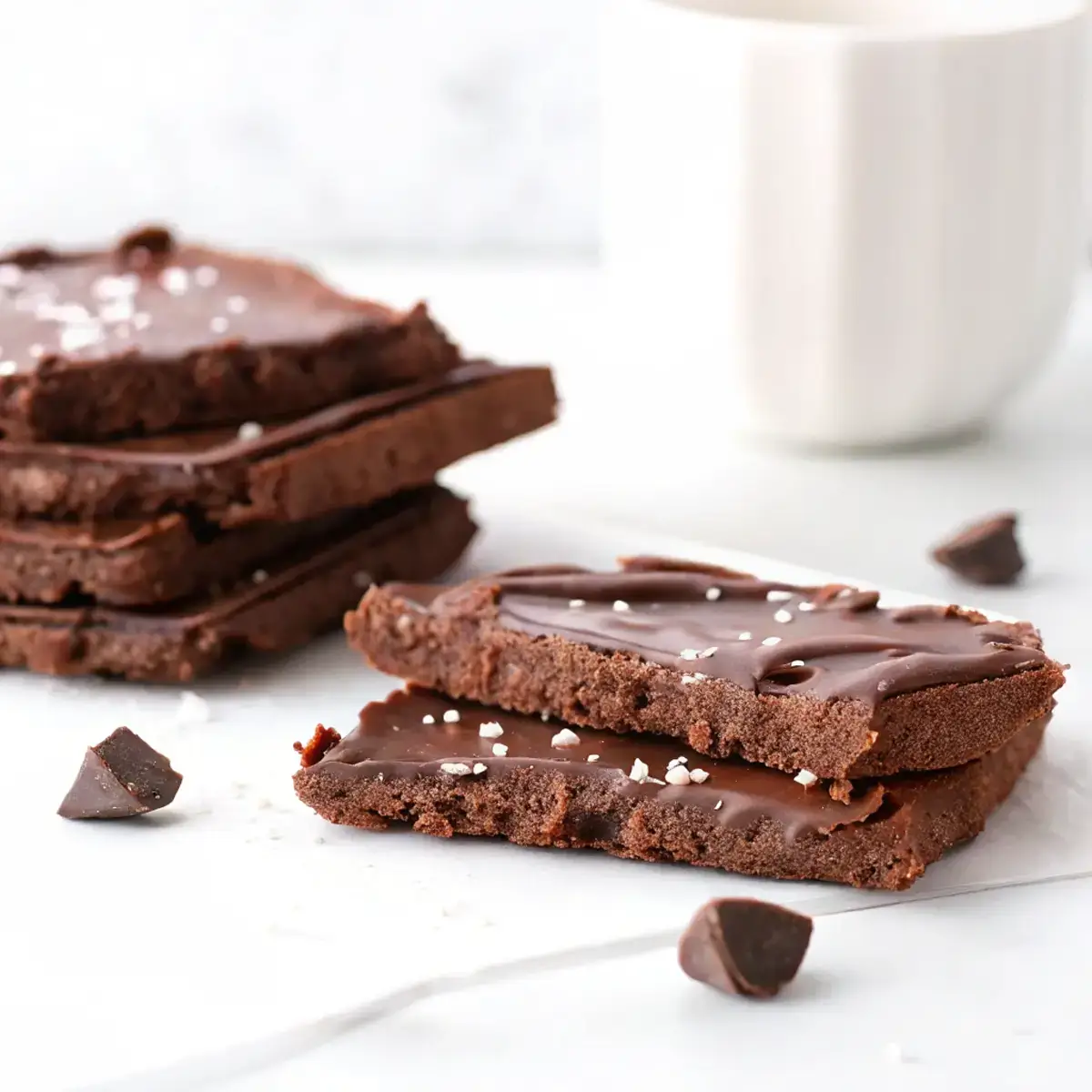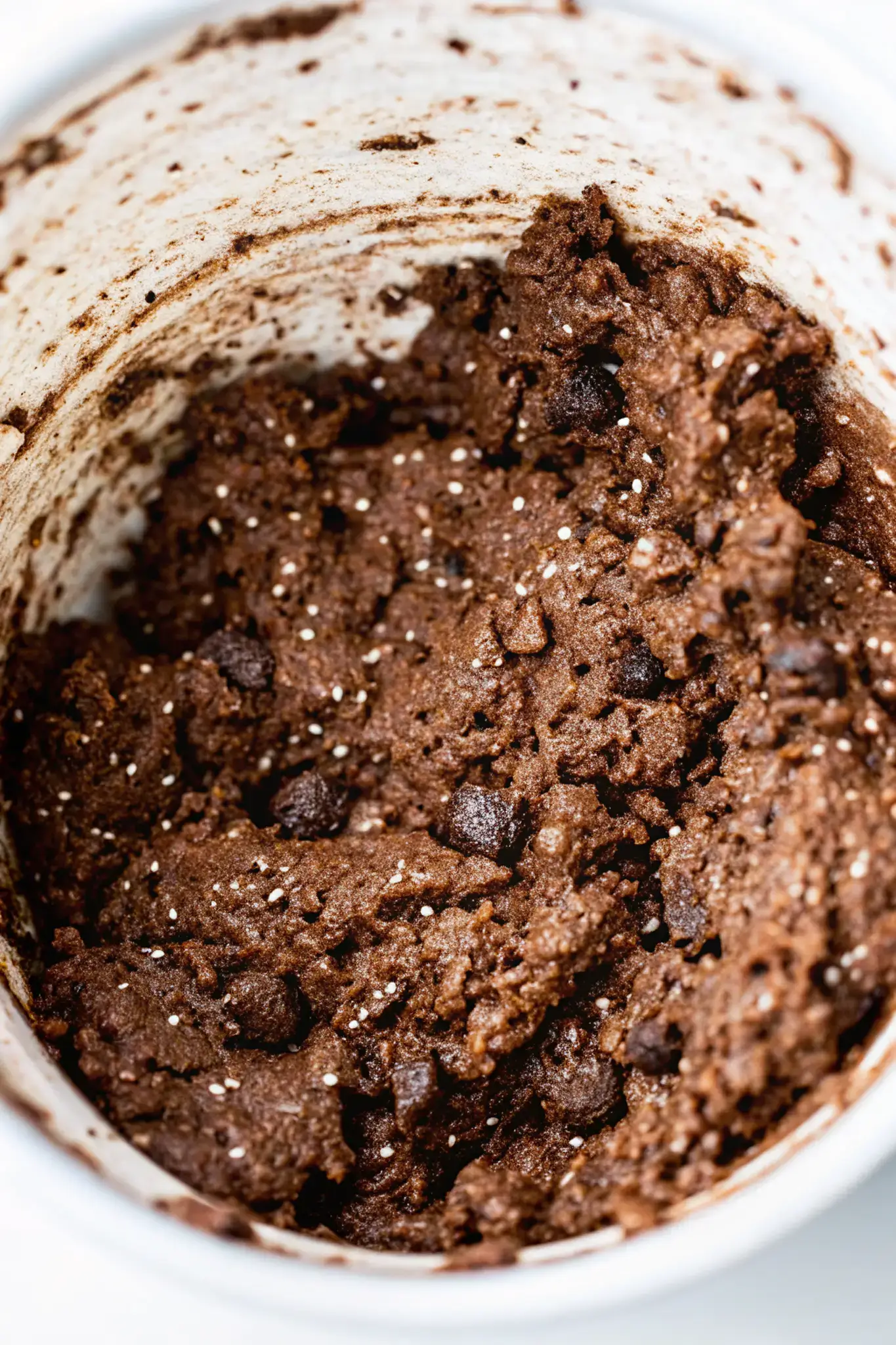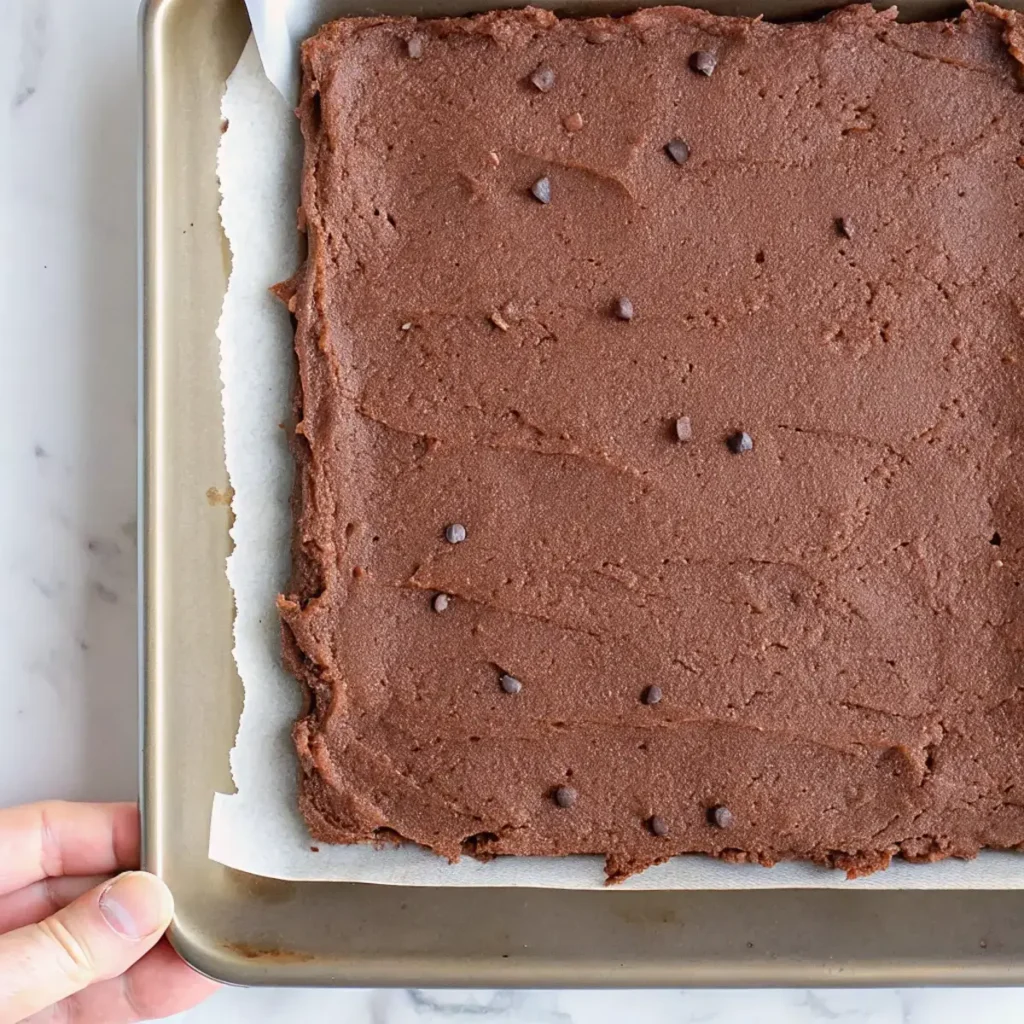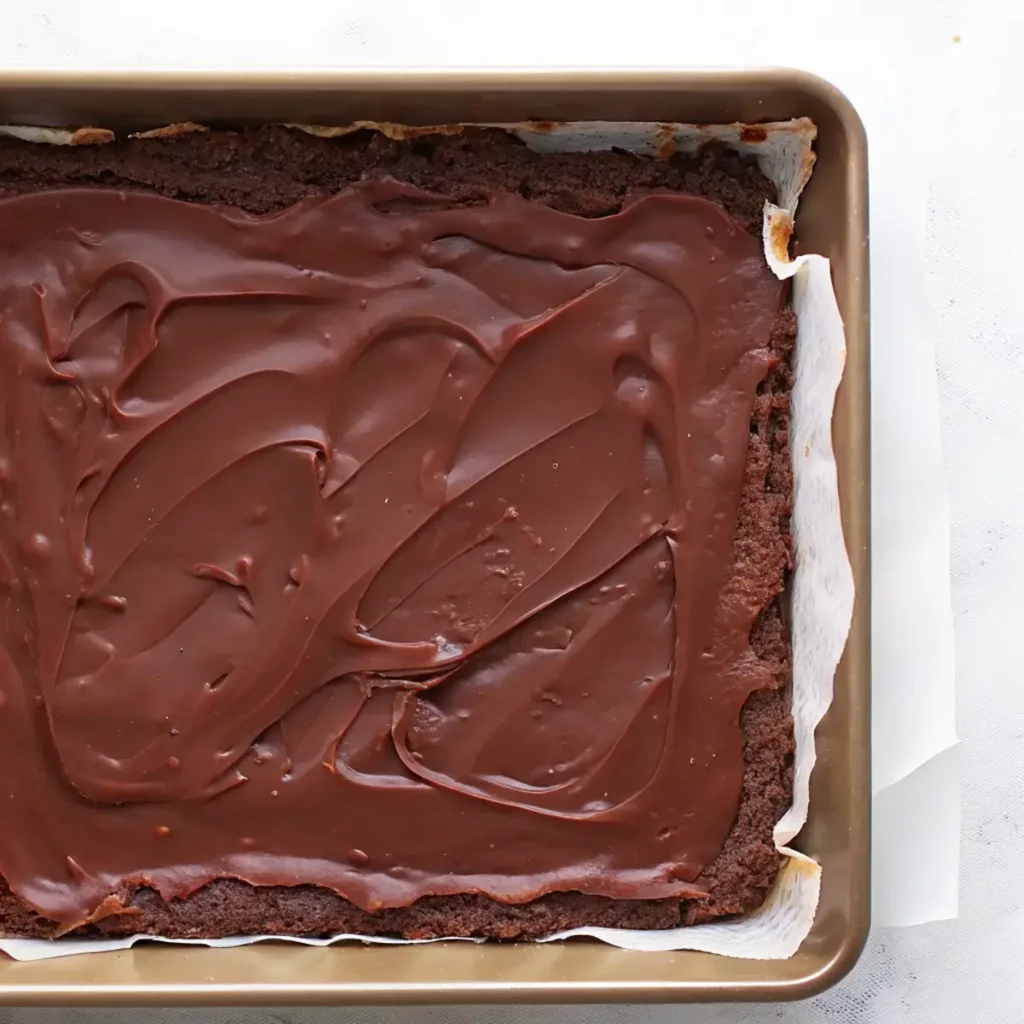Protein brownie bark is my secret weapon when I want something sweet, satisfying, and—best of all—guilt-free. As a busy mom myself, I know the struggle of wanting to treat the family (and myself) while still sticking to healthier choices. That’s why I fell in love with this recipe. It’s crunchy, chocolatey, and packed with protein to help you stay full longer—without the sugar crash. Whether you’re a beginner in the kitchen, juggling school runs, or just trying to eat better without spending hours baking, this one’s for you.
In this article, I’ll walk you through exactly what makes protein brownie bark such a game-changer. We’ll go step-by-step through the easiest recipe, how to tweak it to fit your cravings, and even how to store it for snack attacks all week long. If you’ve ever thought, “I want dessert, but I want it to be good for me too,” you’re in the right place.
Don’t miss our Healthy Dessert Recipes for more simple, delicious ideas you’ll feel great about making.

What Is Protein Brownie Bark and Why You’ll Love It
The Basics of Protein Brownie Bark
Protein brownie bark is a thin, crispy version of a traditional brownie—boosted with protein powder for a healthier twist. It’s light, chocolatey, and has just the right crunch to satisfy your sweet tooth without the sugar overload. Think brownie meets protein snack, but way more fun to make (and eat).
Why You’ll Love This Recipe
This is the kind of recipe that feels like a win—especially on busy days.
- Customizable – Use flavors and mix-ins you already love.
- One bowl, 10-minute prep – Minimal cleanup, maximum ease.
- Chocolatey and crunchy – Satisfying without feeling heavy.
- Kid- and grown-up approved – Everyone loves it!
Benefits of Protein Brownie Bark for Health-Conscious Eaters
High Protein, Low Guilt: The Nutritional Wins
Protein brownie bark gives you that chocolate fix without the sugar overload. Thanks to protein powder and wholesome ingredients, it helps keep you full and energized—minus the crash.
Why it works:
- Protein curbs cravings
- Low in sugar, high in flavor
- Healthy fats and fiber support energy and digestion
Perfect for Kids, Moms, and Snackers Alike
This recipe is a total crowd-pleaser. Kids love the chocolatey crunch, moms love the clean ingredients, and anyone with a busy lifestyle will love how portable and mess-free it is. Toss a few pieces into a lunchbox, enjoy with a post-dinner tea, or keep a stash in your bag.
It’s also a great way to sneak in extra nutrients without any complaints from picky eaters.

Key Ingredients That Make It Healthy and Delicious
Choosing the Right Protein Powder
Your protein brownie bark starts with good protein powder. Stick with:
- Whey or plant-based options
- Chocolate or unflavored for best taste
- Low sugar, clean ingredients
If the batter feels dry, a splash of almond milk or yogurt does the trick.
Naturally Sweet, Flavorful Add-ins
Make it your own with:
- Maple syrup or banana for natural sweetness
- Cocoa powder for a deeper chocolate taste
- Dark chocolate chips, oats, or chia seeds for texture and nutrition
Step-by-Step Recipe for Making Protein Brownie Bark
Ingredients You Probably Already Have
This recipe uses pantry staples you likely already have. All you need is:
- Chocolate protein powder
- Unsweetened cocoa powder
- Almond or oat flour
- Maple syrup or honey
- Nut butter (like peanut or almond)
- Almond milk
- Dark chocolate chips
- Vanilla extract
- A pinch of sea salt (optional)
It’s flexible, forgiving, and totally beginner-friendly.
Quick & Easy Instructions You Can Follow Without Stress
1.Preheat your oven to 325°F (165°C) and line a baking sheet with parchment paper.
2.In a bowl, combine the dry ingredients—protein powder, cocoa, and flour.
3.Stir in the wet stuff—nut butter, maple syrup, almond milk, and vanilla.

4.Mix until smooth. If it’s too thick, add a little more milk to loosen it up.
5.Spread the mixture thinly on the prepared sheet. The thinner, the crispier!


6.Sprinkle on some chocolate chips and sea salt if you like.
7.Bake for 10–12 minutes, just until the edges set.
8.Let it cool, then break into pieces and enjoy!

That’s it. No mess, no stress, and definitely no fancy equipment.
Easy Customizations to Match Your Mood
Flavor Variations to Try
One of the best parts about protein brownie bark? You can totally customize it to fit whatever you’re craving. Whether you want something cozy, crunchy, or a little extra indulgent—there’s a version for that.
Try one of these twists:
- Peanut Butter Swirl – drizzle some on top before baking
- Mint Chocolate – add a drop of peppermint extract
- Coconut Crunch – sprinkle with shredded coconut
- Espresso Bark – mix in a teaspoon of instant coffee for a mocha vibe
- Fruit & Nut – toss in dried cranberries or chopped almonds
Craving something richer and fudgier? Don’t miss our Healthy Raspberry Chocolate Brownies—they’re fruity, decadent, and still super easy to make.
Swaps for Allergies and Dietary Needs
Need it nut-free? Gluten-free? Vegan? No problem—this recipe’s flexible.
Here are a few easy swaps:
- Use sunflower seed butter instead of nut butter
- Try coconut flour or oat flour for a gluten-free option
- Sub agave or maple syrup for honey to keep it vegan
- Use dairy-free chocolate chips and plant-based milk
The goal is always simple, delicious, and doable—for every kitchen and every lifestyle.
Protein Brownie Bark vs Traditional Brownies
I’ll be honest—when I first made protein brownie bark, I wasn’t sure it would scratch that chocolate itch the way a warm, fudgy brownie does. But let me tell you… it totally surprised me. It’s light, crispy, and has this addictive crunch that makes it hard to stop at just one piece. It became my go-to snack when I needed something quick, a little sweet, and not overloaded with sugar.
That said—some days, I still crave that soft, rich, sink-your-teeth-in kind of brownie. You know the one. And when that craving hits? I make a batch of my Delicious Protein Brownies Made Easy. They’re fudgy, filling, and just as simple to whip up.
Here’s how I see it:
- Protein brownie bark is for busy days, snack cravings, and packing in your bag.
- Protein brownies are for slow mornings, family nights, or when you want that classic brownie bite—without all the guilt.
I honestly love having both on hand. One lives in my snack jar, the other gets made when I need that extra-comfort moment.
Smart Tips for Perfect Protein Brownie Bark Every Time
What Makes Protein Brownie Bark Crispy, Not Crumbly
Getting that perfect protein brownie bark crunch without drying it out is all about balance. You want bark that snaps—not crumbles—and here’s how to get it right:
- Spread the batter thinly—about ¼ inch thick is just right
- Bake until the edges set, but don’t overbake
- Cool it completely before breaking—it crisps as it cools
- Go easy on wet mix-ins to keep it from going soft
Whether you’re making it for snacks, meal prep, or just a better dessert option, the crisp texture is what makes protein brownie bark so fun to eat.
Avoiding Common Mistakes (and How to Fix Them)
Here’s how to troubleshoot your protein brownie bark if something feels off:
- Too dry? Add a little more almond milk next time
- Too soft? It might need a few more minutes in the oven
- Didn’t crisp up? Spread it thinner and cool it fully
- Burnt edges? Every oven is different—keep an eye on bake time
The beauty of protein brownie bark is how forgiving it is. Once you make it once or twice, you’ll start tweaking it without even thinking—and that’s when the magic happens.
More Healthy Dessert Recipes to Try Next
If you’re loving this protein brownie bark, why stop here? Keep your snack stash stocked with these simple, high-protein treats—perfect for busy days, little cravings, or just a feel-good moment to yourself.
Here are four more recipes that totally deliver:
Protein Cookie Recipe – Sweet, simple, and perfect for batch-prepping ahead of your week
Chickpea Chocolate Chip Cookies – Soft, chewy, and secretly packed with plant-powered protein
Healthy Blueberry Pie Ice Cream – Cool, creamy, and loaded with fresh flavor (and no guilt)
No-Bake High-Protein Snickers Cookie – A quick-fix snack that hits all the chocolate-peanut butter notes
Frequently Asked Questions About Protein Brownie Bark
Are protein brownies good for you?
Yes! Protein brownies—and especially protein brownie bark—can be a smart snack option. They offer more protein than traditional brownies, helping you feel full longer, and often contain less sugar and fewer processed ingredients.
Are Elavi protein brownies healthy?
Elavi protein brownies use clean ingredients and plant-based protein, making them a solid choice for health-conscious snackers. Like any packaged food, it’s good to check the label—but overall, they’re a better-for-you option compared to most store-bought sweets.
Can I replace flour with protein powder in brownies?
Yes, but do it carefully. You can replace some flour with protein powder, especially in recipes like protein brownie bark, but not always 1:1. Too much protein powder can make baked goods dry, so it’s best to use a mix and adjust liquids as needed.
How many calories are in a protein brownie bar?
That depends on your ingredients, but most homemade protein brownie bark pieces range from 90 to 150 calories each. Using less sugar, smart fats, and a good-quality protein powder helps keep the numbers in check.
Conclusion: Simple, Satisfying, and Ready When You Are
Protein brownie bark is proof that dessert doesn’t need to be complicated—or packed with sugar—to be satisfying. With just a few basic ingredients and minutes of prep, you get a chocolatey, protein-packed treat that actually supports your lifestyle.
Whether you’re baking for your family, sneaking a snack between meetings, or just treating yourself because you deserve it—this recipe’s here to make life a little sweeter and a whole lot easier.
Give it a try and let me know what you think! Leave a quick comment or share your version on socials—I’d love to see what you bake up.
PrintProtein Brownie Bark
Protein Brownie Bark is quickly becoming the go-to snack for anyone craving something sweet without blowing their macros.
- Prep Time: 10 minutes
- Cook Time: 18–20 minutes
- Total Time: 14 minute
- Yield: 12 pieces
- Category: Dessert
- Method: Baking
- Cuisine: American
- Diet: Gluten Free
Ingredients
Protein Powder: Choose a chocolate or unflavored whey, casein, or plant-based blend
Unsweetened Cocoa Powder: For that rich chocolate kick
Egg Whites or Whole Eggs: Help bind the mixture while keeping it light
Almond Flour or Oat Flour: For structure without heaviness
Nut Butter or Coconut Oil: Adds moisture and healthy fats
Sweetener: Use stevia, monk fruit, or maple syrup depending on your dietary needs
Vanilla Extract & Salt: Small touches that boost flavor big time
Optional Add-ins: Crushed nuts, sugar-free chocolate chips, shredded coconut, chia seeds
Instructions
Preheat oven to 325°F and line a tray with parchment
Mix wet ingredients in a bowl
Add dry ingredients and stir until smooth
Spread batter thinly on tray
Bake 15–20 mins until edges are crisp
Cool, break into pieces, and store airtight
Notes
Add-ins like coconut flakes, espresso powder, or sugar-free chocolate chips can personalize your bark!
Nutrition
- Serving Size: 1–2 pieces
- Calories: 130
- Sugar: 2g
- Fat: 6g
- Carbohydrates: 6g
- Fiber: 3g
- Protein: 11g
Keywords: Protein Brownie Bark

